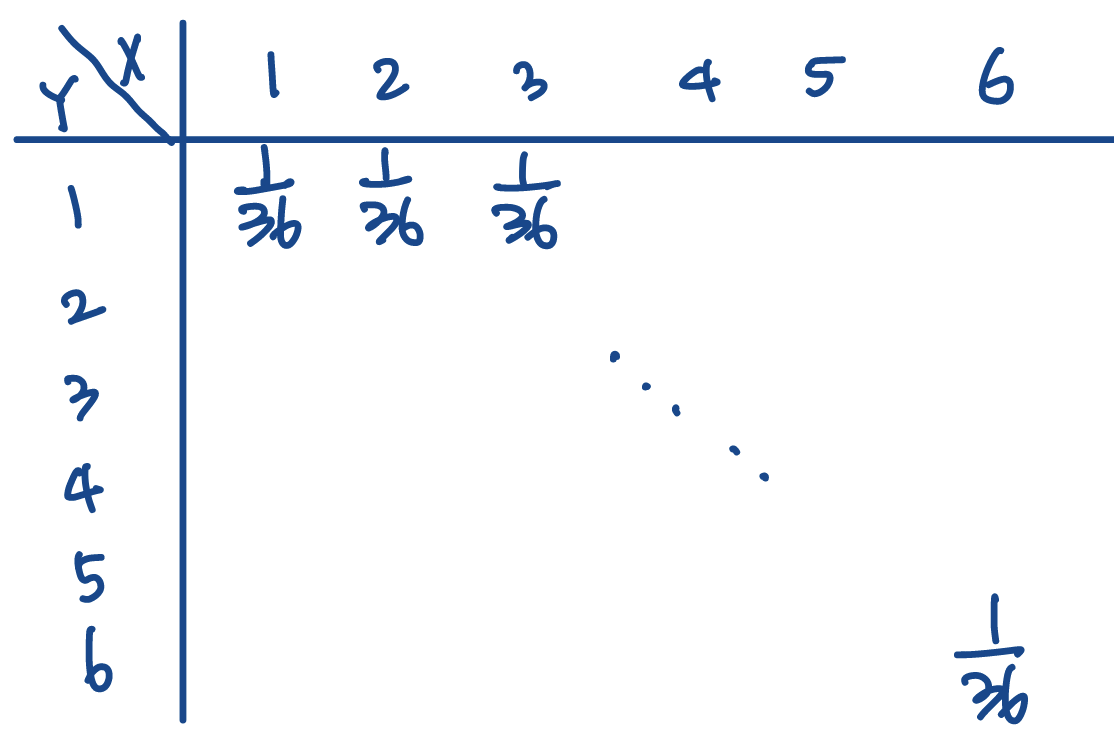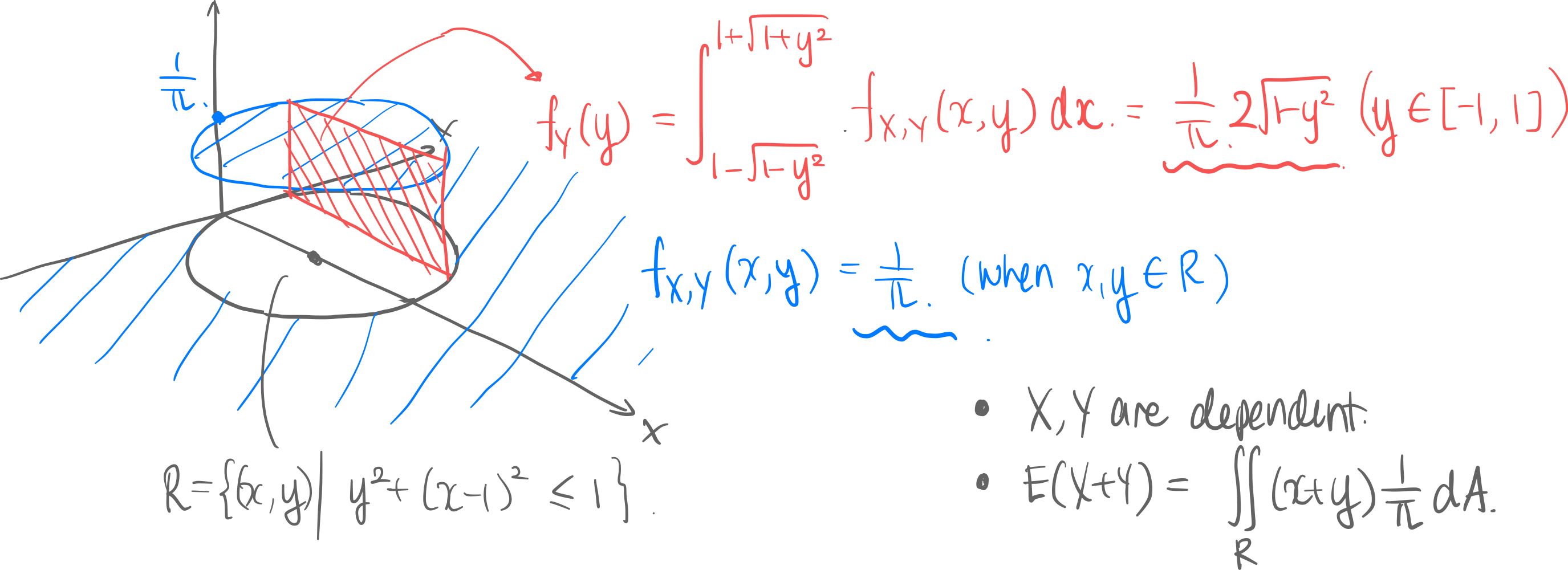Discrete Joint Distribution
def. Joint Distributions of two discrete random variables encode the probabilities for every pair of for . Following is an example of a joint distribution where is the result of rolling a first dice and the result of a second roll.

REMARK. Joint Distributions are distributions too, which means it has to follow all the rules of distributions (e.g. )
Continuous Joint Distribution
def. Joint Probability Density. Let be two independent continous random variables. Then the joint probability density function is defined as the derivative of the cumulative density function:
And thus the following holds:
- where is an event

The blue volume in the picture is the probability of the event X and Y are in R.
Full Visual Example

- Blue is the probability density function,
- Red is the marginal probability density of ,
Minimum and Maximum Joint Dist
thm. Let be i.i.d.; let . Then:
Examples of Joint Distributions
Tip
Recall that joint distributions are also distributions [=encapsulate fully the information of an experiement].
Uniform Joint
thm. If are both uniformly distributed over , then…
- height of the distribution is (where denotes the area of the outcome space.)

Normal Joint (Linear Combination)
thm. Linear Combination of Normal Distributions. If and then:
Normal Joint (Product)
thm. if and (i.e. std. dev. is the same) then
- Volume of sector from is

Rayleigh Distribution
[=Squared & Rooted Joint Normal]
def. Rayleigh Distribution. let and , then:
- Where is the “scaling factor” (standard dev. must be same for )
- If then is a Standard Rayleigh distribution:
thm. Standardizing Rayleigh Distributions. If :